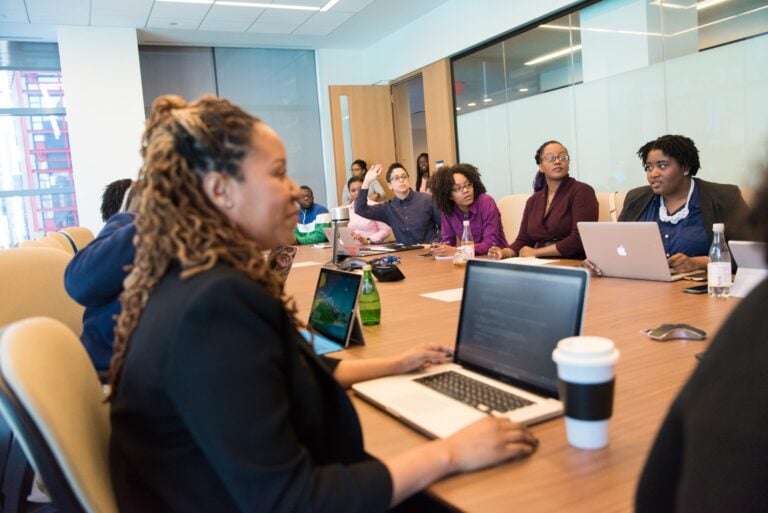How Community Solar Gardens are Democratizing Renewable Energy Access
 Shifting to renewable energy is crucial as the planet warms. Reducing your town’s carbon emissions could improve the environment and make electricity more affordable for your neighbors, which is why many people are looking into community solar gardens. Learning more about the phenomenon could empower you to guide your entire town into a greener future.
Shifting to renewable energy is crucial as the planet warms. Reducing your town’s carbon emissions could improve the environment and make electricity more affordable for your neighbors, which is why many people are looking into community solar gardens. Learning more about the phenomenon could empower you to guide your entire town into a greener future.
What Is a Community Solar Garden?
A community solar garden is a public project where multiple residents invest in solar panels that send electricity to participating subscribers. The panels exist on a plot of land instead of a rooftop. People appreciate solar gardens because they make renewable energy more accessible, especially in rural or low-income communities.
How Does a Community Solar Garden Work?
Instead of powering a single home, community solar gardens contain photovoltaic panels that send green electricity to residential and commercial properties. Experts with the National Renewable Energy Laboratory estimate 50% of U.S. households are unable to use solar panels due to unusable sloping or space. Community panels make green electricity a possibility for those limited by their household construction or financial capabilities.
Benefits of Creating a Solar Garden Space
Residents may benefit in numerous ways when they can join a community solar garden. These could be the encouragement you need to bring up the idea with your neighbors.
Your Town Could Reduce Its Planetary Impact
If more homes and businesses operated on green energy, nearby electricity plants wouldn’t have to produce as much power. Their carbon emissions may shrink along with your town’s environmental footprint. Community solar gardens make it easier for larger groups of people to use eco-friendly electricity, so you could have a widespread positive impact on the planet by creating a renewable energy resource for everyone.
When it’s time to upgrade or retire your town’s solar panels, companies can extract the silicon and trace metals to dispose of them safely while potentially recycling the remaining parts. Your town’s long-term waste can remain low even after adding new photovoltaic technology to a local plot of land.
Everyone Can Reduce Their Electricity Bills
Electrical bills increase for numerous reasons. Power companies might charge more per kilowatt hour (kWh) because the grid is working overtime to cool homes due to the planet’s hotter weather. If your town is growing quickly, the increased consumer demand can also make kWh fees rise.
When community solar panels are available, locals can save money by relying on green energy instead. The extra money saved every month may even boost your local economy because residents might spend it on locally procured goods and services.
No One Has to Install Panels on Their Homes
People sometimes feel nervous about adding solar panels to their roofs. No one wants rainwater damage caused by holes, which isn’t an issue with community solar panels.
Colorado residents have enjoyed a similar program for many years by placing solar gardens over parking spaces, on top of stores or within vacant lots. Anyone can join the green energy movement without installing anything on their houses.
Contracts Have More Flexibility
When someone purchases solar panels, they enter a contract that locks them in for a certain number of years. They have to pay the loan back by themselves, but community-based photovoltaic gardens are more flexible.
Participants sign up for a small monthly payment in return for green energy. The payments add up to the monthly fee for the community solar loan. People can leave their contract if they move out of their rental home or change their mind because they aren’t personally liable for the loan payments.
Residents Can Overcome Affordability Barriers
Some would love to power their homes with green energy but can’t access a loan. They may not have good credit scores or the financial ability to pay an additional monthly loan bill. While you and your neighbors can still live greener lifestyles by using low-flow water savers or recycling, powering your homes with renewable electricity is still a dream many can’t reach.
Community solar renters often have lower subscription fees compared to a loan payment. They also don’t always need to undergo credit score checks to participate. More residents can join your eco-friendly energy movement, which makes your town greener and eliminates an economic barrier holding people back from their desired low-emission lifestyle.
Potential Challenges to Consider
Change almost always comes with a few challenges. Uncovering the roadblocks communities face when establishing solar gardens could make the process easier if you’re interested in starting one, too.
Tax Credits Don’t Count Toward Subscription Solar Contracts
Some people get excited about using solar panels when they find out they could get a federal tax credit for the installation. Unfortunately, the credit doesn’t apply to community panels. Only residents adding photovoltaic technology to their homes can access the incentive.
Anyone thinking about starting a public solar garden should keep that in mind. You won’t get any tax money back to help pay off the installation loan.
Community Solar Gardens Aren’t Available in Every State
Shared renewables legislation makes community solar gardens legal. Even though this public green energy option may be popular, it isn’t possible to create in every state.
The U.S. Environmental Protection Agency notes that community renewables are only legal in 24 states, plus D.C. and Puerto Rico. You can contact your state’s representatives for the environment or green energy to ask about your local laws if you have any questions.
Sunny, Expansive Plots of Land May Be Challenging to Find
Some places have limited space. Community solar gardens often exist on empty plots of land to maximize their sun exposure and the collective number of panels. Investigate your town to list potential lots. You can also meet with business owners to see if they’d volunteer their rooftops or parking lots.
Finding the best place for your panels might take some creativity, but it could be worth it if you have widespread community interest. In the meantime, everyone can pitch ideas to help the planet while you find the best place for your solar garden, like enjoying locally grown produce or starting native flower gardens.
Revitalize Your Community With Renewable Energy
Once you know how a community solar garden works, it could seem like the best green power source for your town. Discuss the possibility with local leaders after seeing if the project is possible, given your state’s renewable energy laws. You and your neighbors could live greener lives and shrink your town’s carbon footprint without signing up for individual solar loans.


